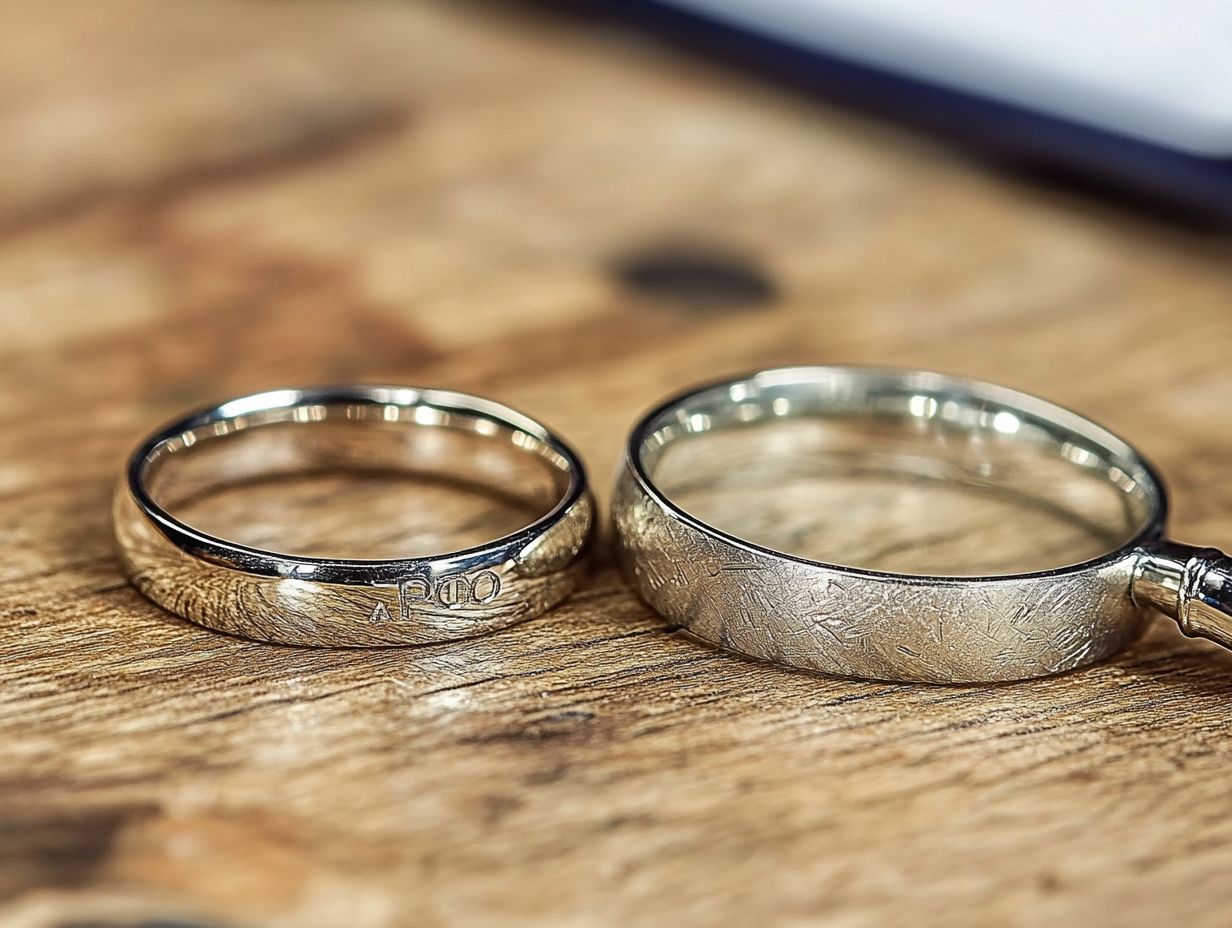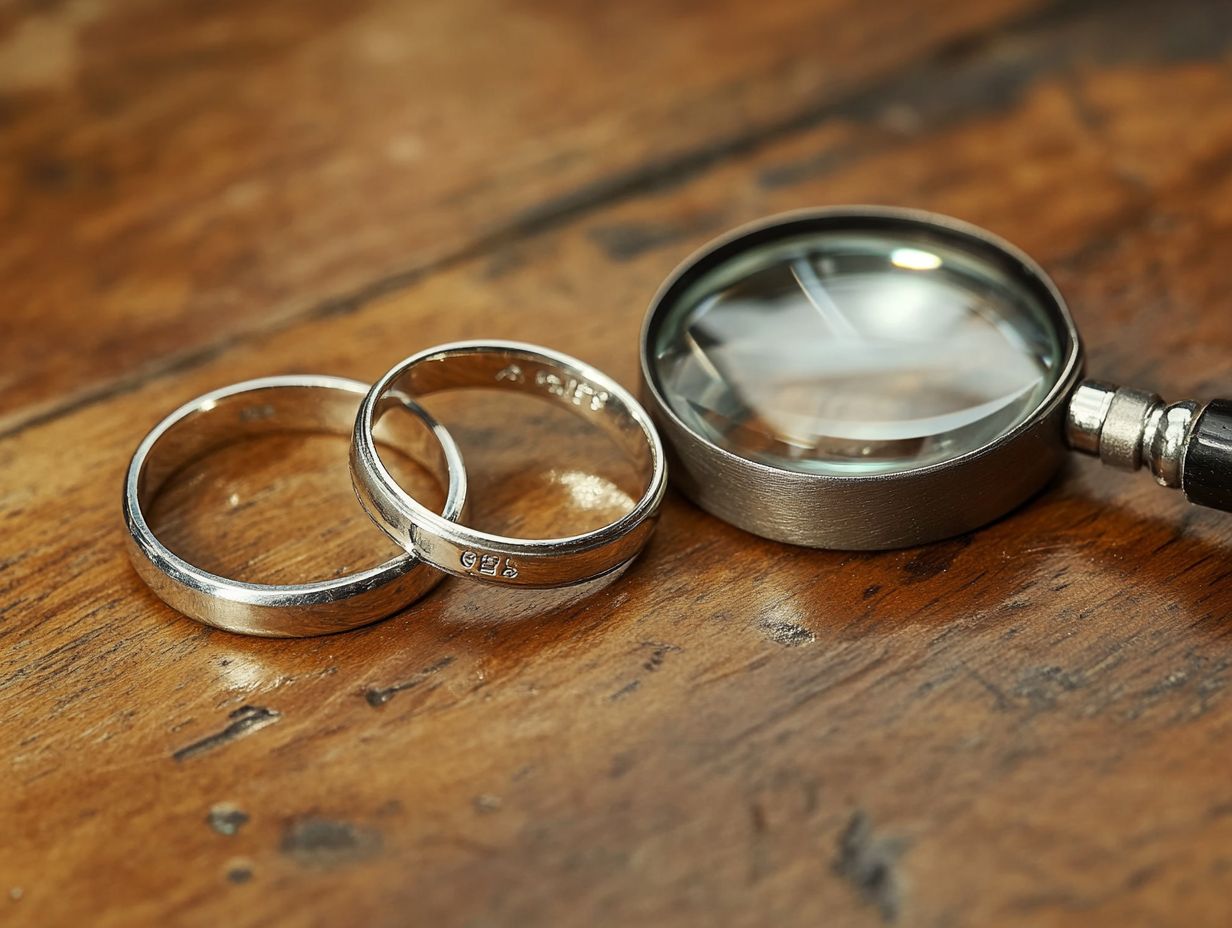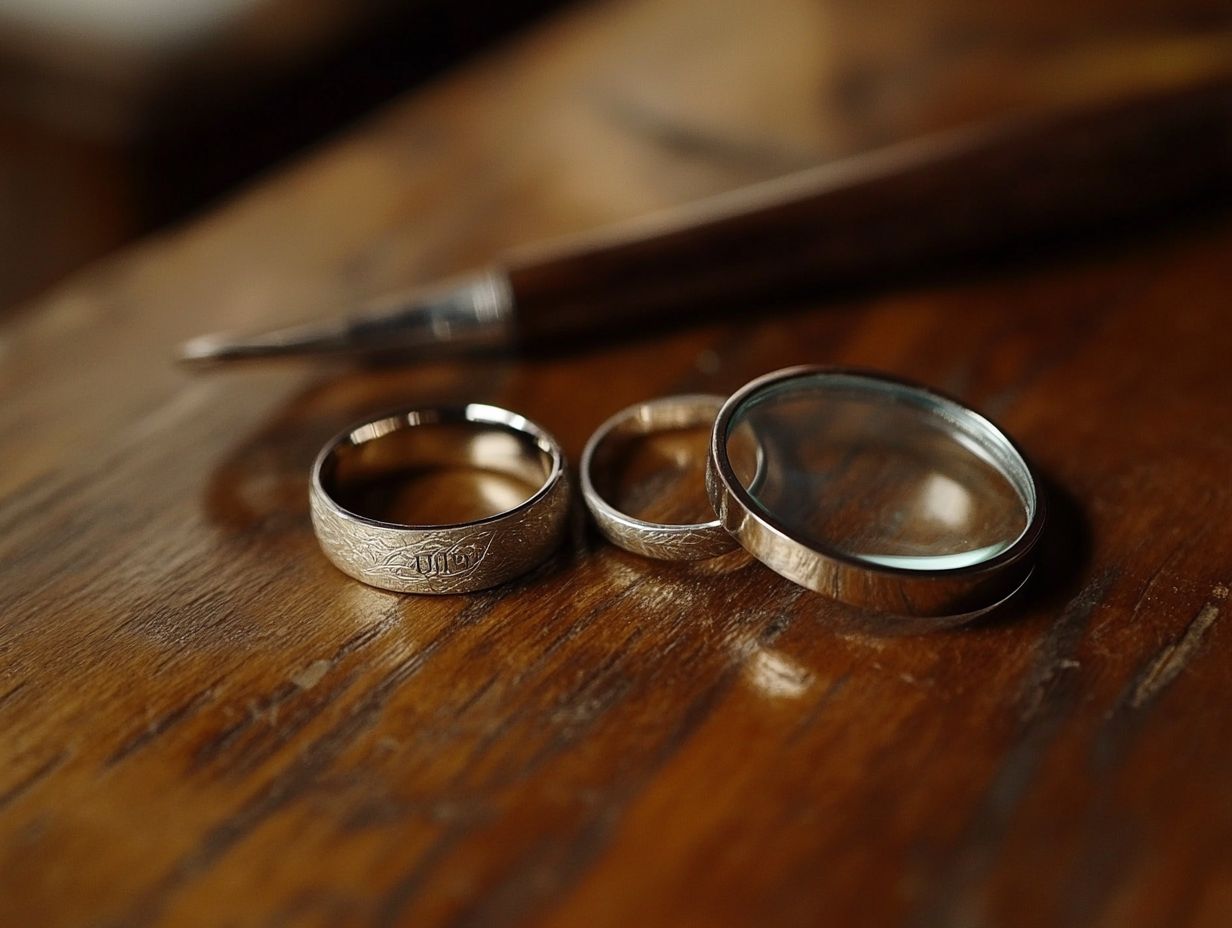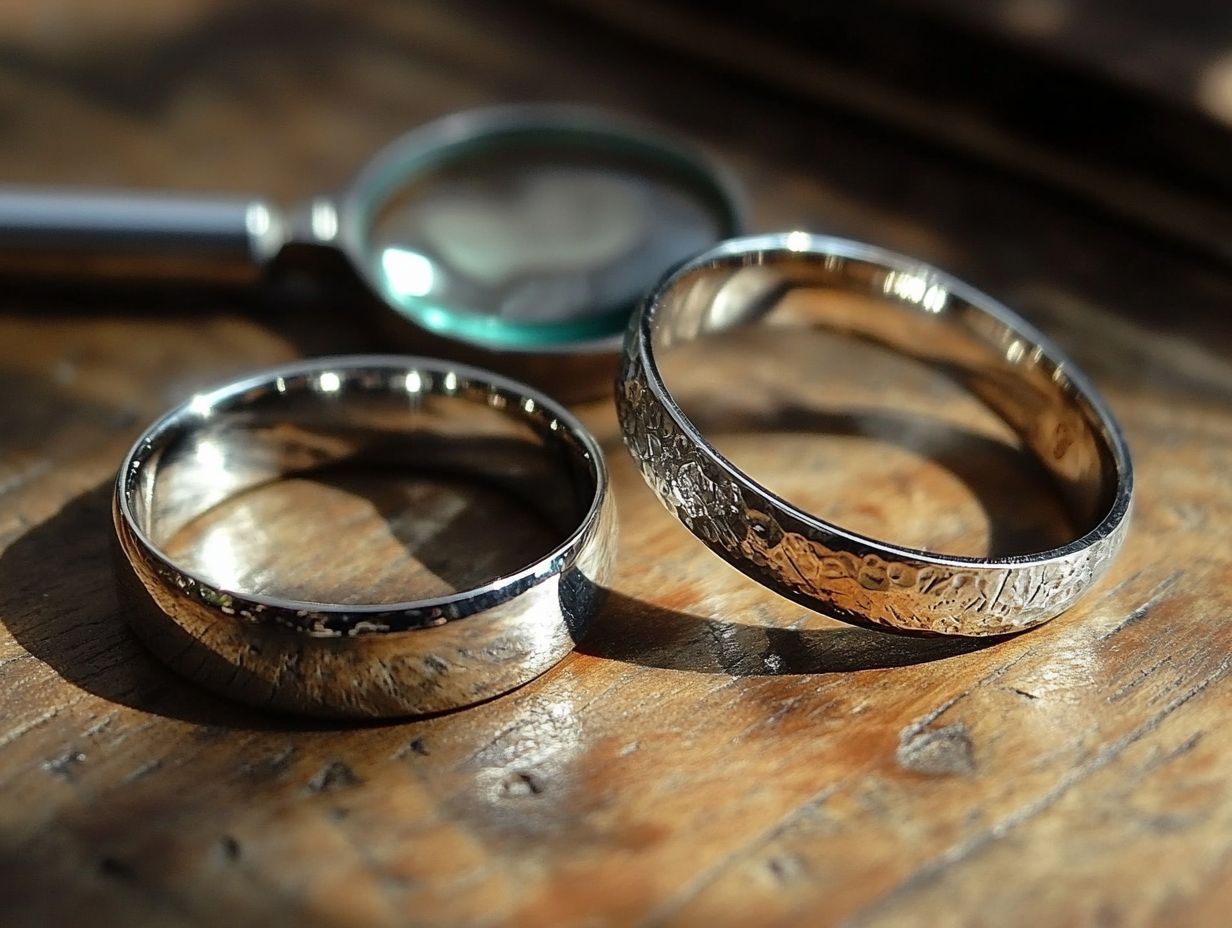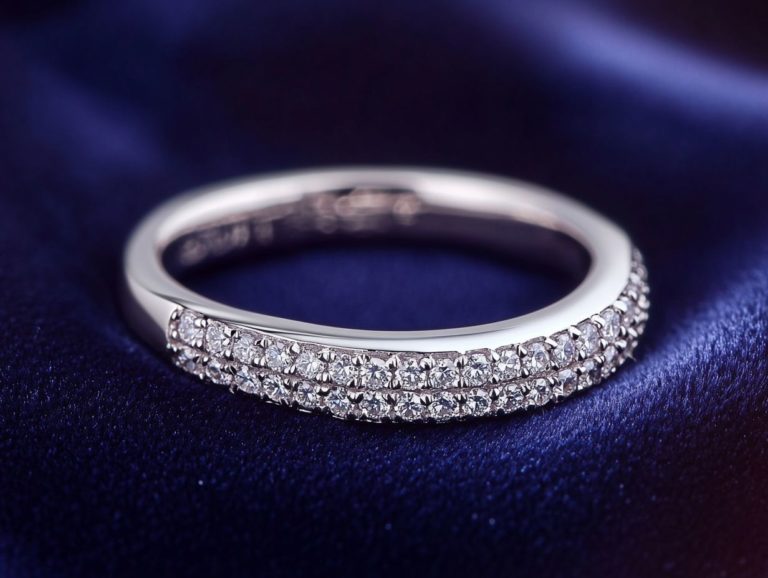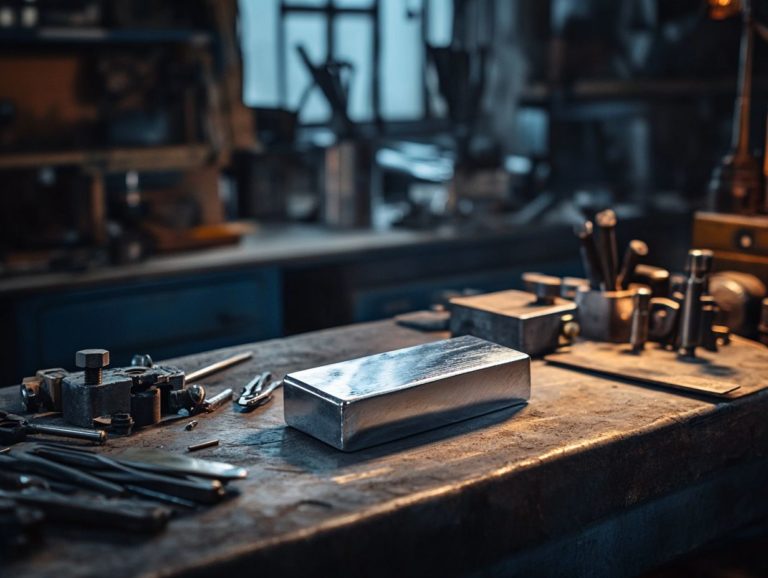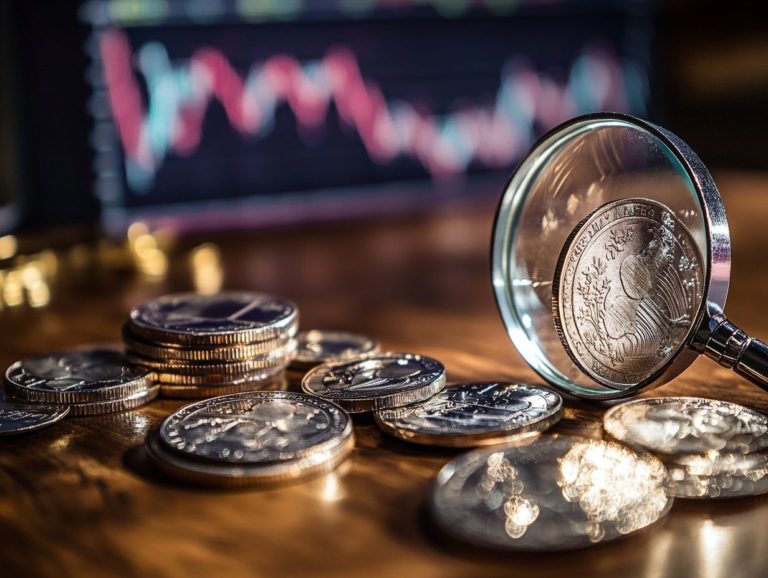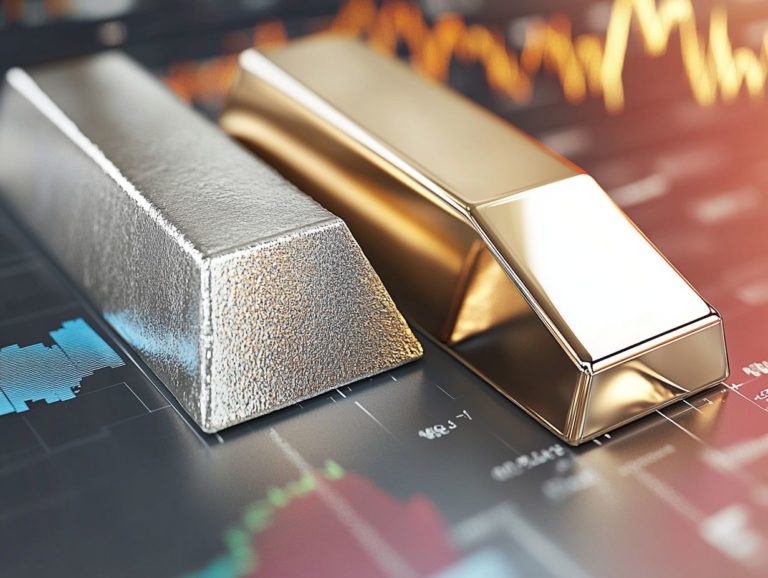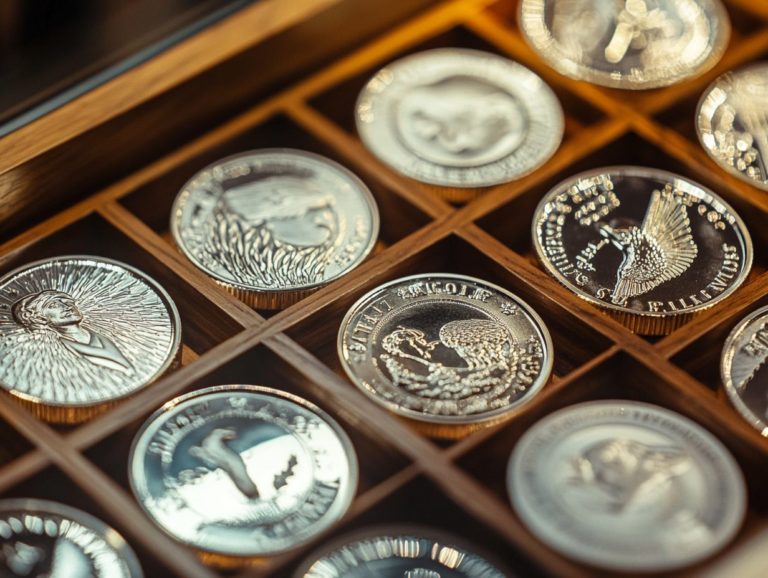How to Spot Fake Platinum Products
Platinum transcends being merely a precious metal; it embodies luxury and status, coveted for its rarity and distinctive qualities.
As its popularity soars, the market is increasingly inundated with counterfeit products.
This exploration delves into what renders platinum valuable, how to discern genuine pieces from fakes, and the prevalent scams to be vigilant about.
Whether you re a seasoned collector or embarking on your first purchase, grasping the intricacies of platinum will empower you to make informed choices and sidestep costly missteps.
Contents
- Key Takeaways:
- Understanding Platinum and Its Value
- Signs of Fake Platinum Products
- Common Scams and How to Avoid Them
- What to Do if You Suspect a Fake Platinum Product
- Frequently Asked Questions
- How can I tell if a platinum product is fake?
- Are there any physical characteristics that can help identify fake platinum?
- Can fake platinum be sold at the same price as real platinum?
- What other markings should I look for on a platinum product?
- Is it possible to test the authenticity of platinum at home?
- What should I do if I think I bought fake platinum?
Key Takeaways:
- Stay ahead of counterfeiters! Learn the key characteristics to identify real platinum.
- Be aware of common scams such as fake certifications and misleading claims. Stay safe when purchasing platinum by following our tips.
- If you think a product might be fake, act quickly! Verify its authenticity and report any suspicious sellers right away.
Understanding Platinum and Its Value
Platinum is a precious metal known for its rarity and durability. It is highly valued in the jewelry industry, particularly for wedding bands and exquisite pieces.
Its unique grayish-white color enhances its appeal and increases demand in various industries.
As you explore the world of platinum jewelry, it’s essential to grasp the characteristics that boost its value, such as its composition, weight, and the unique properties that distinguish it from other metals in the market.
What is Platinum and Why is it Valuable?
Platinum is a substantial, malleable metal renowned for its exceptional properties, including remarkable durability, corrosion resistance, and an alluring appearance. These qualities make it a top-tier choice for jewelry, especially wedding bands and fine platinum pieces.
This valuable metal boasts a rich history, tracing back to ancient civilizations where it was cherished not only for its beauty but also for its rarity. Historically, it has been viewed as a symbol of prestige, rapidly becoming the preferred material for artisans who create breathtaking pieces that embody enduring love and commitment.
Beyond its aesthetic appeal, platinum serves critical industrial roles in sectors like electronics, automotive manufacturing, and chemical processing, where its resilience against wear and tear is essential. Consequently, these attributes elevate its market value, attracting both consumers in search of luxury and industries that require unwavering reliability.
Signs of Fake Platinum Products
Identifying fake platinum products requires you to recognize essential signs that distinguish authentic platinum from mere imitations. Look for platinum markings, as these are crucial indicators of quality.
Pay attention to its distinctive characteristics, which set genuine platinum apart. Additionally, be vigilant for signs of oxidation; such marks often suggest the presence of inferior metals rather than true platinum.
Physical Characteristics to Look Out For
When evaluating a platinum item, it s essential to pay close attention to its physical characteristics. Genuine platinum often feels weighty in your hand, showcases a distinct grayish-white hue, and exhibits minimal signs of scratches.
If you notice any white spots or signs of oxidation, it might be a red flag indicating a counterfeit product.
This unique weight can catch newcomers off guard, serving as an immediate clue to authenticity since real platinum is denser than many other metals commonly used in jewelry.
Its natural resistance to tarnishing helps it retain a beautiful luster over time. This quality sets it apart from silver or white gold, which can discolor.
As you shop, keep an eye out for these remarkable traits. They re reliable indicators that can help you avoid disappointment and ensure you make a valuable investment.
Understanding these attributes allows you to navigate your options with confidence, ultimately leading you to genuine pieces that exemplify quality and craftsmanship.
Chemical and Purity Tests
To verify the authenticity of platinum items, you can conduct various chemical and purity tests, such as the acid scratch test and simple home assessments. Just be sure to take necessary safety precautions when working with chemicals.
One of the most dependable methods is the acid scratch test. This technique involves gently scraping the metal against a testing stone and applying specific acids to observe the reaction. If the scratch retains its color and there s minimal bubbling or discoloration from the acid, you can feel confident the item is likely genuine platinum.
You can also use home tests like magnetism. Authentic platinum is non-magnetic, unlike some alloys. Always prioritize safety by wearing gloves and protective eyewear while handling acids.
Using high-quality testing kits is essential to avoid misleading results and ensure accurate assessments of the platinum’s presence.
Common Scams and How to Avoid Them
In the world of platinum jewelry, it s easy to fall victim to scams like counterfeit certifications and misleading claims. To protect yourself, consult an expert appraiser or a certified jeweler before making any purchase.
This proactive step will equip you with the knowledge needed to navigate the intricate landscape of luxury jewelry with confidence.
Fake Certifications and Misleading Claims
Fake certifications and misleading claims can skew your perception of platinum authenticity. It’s crucial to authenticate products through evaluations by expert appraisers or certified jewelers.
In a marketplace where aesthetic allure often overshadows quality, counterfeit certifications can falsely assert a product s purity or origin. Such deceptions erode consumer trust and inflate market prices for subpar items. Protect yourself by seeking out reputable retailers and insisting on certification from esteemed gemological institutes.
Being vigilant about red flags like vague descriptions or a lack of detailed grading can help you avoid purchasing inferior products. Partnering with trustworthy professionals ensures that any investment in platinum is genuine, cultivating confidence in your purchase.
Tips for Buying Platinum Safely
When purchasing platinum, work with a certified jeweler or an expert appraiser. They can help verify that your item is genuine and guide you through the buying process while ensuring you take all necessary safety precautions.
Request detailed documentation that includes a certification of authenticity, ideally from reputable institutions like the Gemological Institute of America (GIA). Pay attention to the metal’s purity, typically marked as 950 or 900 platinum, indicating the percentage of pure platinum in the alloy.
Always conduct transactions in secure environments, ideally within well-lit stores or during regular business hours. If a deal seems too good to be true, exercise caution. Seeking second opinions from knowledgeable professionals can protect you from fraud.
Establishing a trustworthy relationship with your jeweler or appraiser can enhance your confidence and lead to a smoother buying experience.
What to Do if You Suspect a Fake Platinum Product
If you suspect you might be dealing with a counterfeit platinum product, your first action is to verify its authenticity. Use various verification methods, such as examining platinum markings and consulting a qualified appraiser.
Once you’ve gathered the necessary evidence, it’s crucial to report any fraudulent sellers to protect consumers and safeguard others from similar issues.
Don’t hesitate! Act now to protect your investment and ensure you receive genuine platinum products.
Steps to Take to Verify Authenticity
To verify the authenticity of a suspected fake platinum item, you can take several important steps. Begin by examining platinum markings and conducting an acid scratch test. You might even try some home tests as well.
Consulting a professional appraiser is wise for a definitive assessment. Each of these methods is essential in ensuring that what you possess is indeed genuine platinum.
Look for established platinum markings like ‘PT,’ ‘950,’ or simply ‘Platinum,’ as these indicate purity. The acid scratch test involves applying a specific acid to your item and observing its reaction, which reveals its true composition.
Home tests can be handy too. For instance, using a magnet will show you that authentic platinum is unresponsive.
While these approaches provide valuable insights, consulting a professional appraiser is crucial for thorough verification. They have the expertise and the tools necessary to assess the authenticity of your piece accurately, ensuring you have the peace of mind you deserve.
Reporting Fraudulent Sellers
Act now! Reporting fraudulent sellers is an essential part of your consumer protection journey, particularly when purchasing platinum. Document your experiences and provide details to authorities or organizations dedicated to fighting the trade of counterfeit items.
Taking action doesn t just protect your interests; it strengthens the integrity of the market as a whole. By recognizing the signs of deceptive practices, you become part of a collective effort that discourages unethical sellers.
To effectively document these instances, gather all relevant information:
- Transaction records
- Photographs of the items
- Communication with the seller
This documentation can be presented to consumer protection agencies or online marketplaces to initiate an investigation. By proactively reporting these fraudulent activities, you play a vital role in enhancing safety and trust within your purchasing environments, ultimately fostering a healthier marketplace for everyone.
Frequently Asked Questions
How can I tell if a platinum product is fake?
One way to spot fake platinum products is by looking for a stamp or hallmark that indicates the purity of the metal, usually “950” or “PT950.” If the product lacks a stamp or the stamp looks suspicious, it could be a sign that it is not real platinum.
Are there any physical characteristics that can help identify fake platinum?
Yes, real platinum is a dense and heavy metal. If a product feels lightweight or cheap, it may be fake. Platinum also has a distinct luster and does not tarnish. If the product lacks a bright shine or appears tarnished, it may not be real platinum.
Can fake platinum be sold at the same price as real platinum?
Unfortunately, yes. Some dishonest sellers may try to pass off fake platinum as real and price it accordingly. It’s important to do your research and purchase from reputable sellers to avoid falling victim to this scam.
What other markings should I look for on a platinum product?
In addition to the purity stamp, look for a maker’s mark or logo. This can help verify the authenticity of the product and also give you an idea of where it was made.
Is it possible to test the authenticity of platinum at home?
While some DIY tests for platinum exist, such as scratching it against a ceramic tile or using a magnet, these are not always accurate. The best way to ensure the authenticity of a platinum product is to have it professionally tested by a trusted jeweler.
What should I do if I think I bought fake platinum?
If you believe you have been sold a fake platinum product, the first step is to contact the seller and express your concerns. If they refuse to address the issue, you may need to report them to the proper authorities or seek legal action. It’s always best to be cautious when purchasing expensive items and to thoroughly research the product and seller beforehand.




